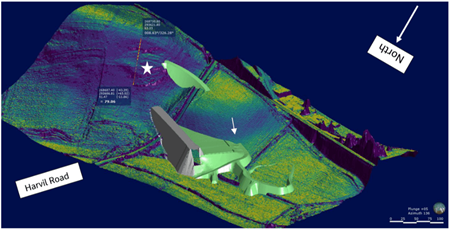Item has been added to bibliography
Please login to use email notification
Please login to use bibliography
WMRG: Periglacial Geohazards at the Colne Valley South Embankment and Chiltern Tunnel Ventilation Shaft Design
Event type:
Evening meeting, Hybrid, Virtual event, Regional Group
Organised by:
Geological Society Events, West Midlands Regional Group
Venue:
Hybrid In Person at Mott MacDonald, Birmingham and Virtual via Zoom
Event status:
EVENT CLOSED
Time and location
Tuesday 9 April 2024 | Mott MacDonald, 10 Livery St, Birmingham B3 2NU & Zoom Video Conference | 6:30pm start.
Event details
Periglacial slip surfaces have different causes and mechanisms, but all present a potential geohazard to engineering works; in this case, embankment construction. Periglaciation can result in the presence of a mantle of material at or near the ground surface characterised by the presence of surfaces with low shear strength, with parameters possibly as low as ‘residual’ strength values. There are significant periglacial shear surfaces recorded in the Denham area (particularly associated with the construction of the M25), the most well publicised of which are solifluction shears recorded in the London Clay.
During interpretation of the ground investigation, and subsequent ground modelling for the detailed design of the Colne Valley South Embankment, Jacobs confirmed the presence of relic shear surfaces within the Head Deposits and Reading Formation (Lambeth Group). Test data demonstrated residual strength values lower than those defined during the “scheme” and preliminary design, and this reduced value had required reconsideration of the design.
Also, there are five shafts along the HS2 Chiltern Tunnel ranging from 67m to 35 deep. The tunnel passes through the Chiltern Hills and is underlain by Chalk of the Seaford, Lewes Nodular and New Pit formations). Periglacial activity during the last glacial period has resulted in complex weathering patterns in the chalk producing variable ground and solution features. This variable ground was evident at the shaft locations and phased GI was undertaken to manage the geotechnical risk.
These talks were first presented at the Quaternary Engineering Geology of High Speed Two in 2023.

Leapfrog Model Displaying Periglacial Geohazards at Colne Valley
Speaker

Guillermo Mondejar (Geotechnical Engineer, Jacobs)
Guillermo is a Geotechnical Engineer at Jacobs and a Fellow of the Geological Society, currently working towards chartership. He joined Jacobs, formerly CH2M as a graduate in 2015 following the completion of an MSci in Engineering Geology at the Complutense University of Madrid.
Guillermo has worked on a variety of projects during her career, most notably in the rail sector. During his career in the UK, he has gained a variety of geotechnical experiences across a range of geological settings and covering most of the common stages of ground engineering projects. His first involvement with HS2 was in 2017, when he was seconded into the Ground Investigation delivery program team. Since 2018, he has been involved in the design team for ALIGN, for contract C1 of the MWCC.
Guillermo has been actively involved in the development of the digital delivery strategy within Jacobs as a technical champion for Digital Ground Modelling and Visualisation.
Registration
To reserve a place, please email the committee at [email protected]. We will respond in advance of the meeting with the relevant log-in details.